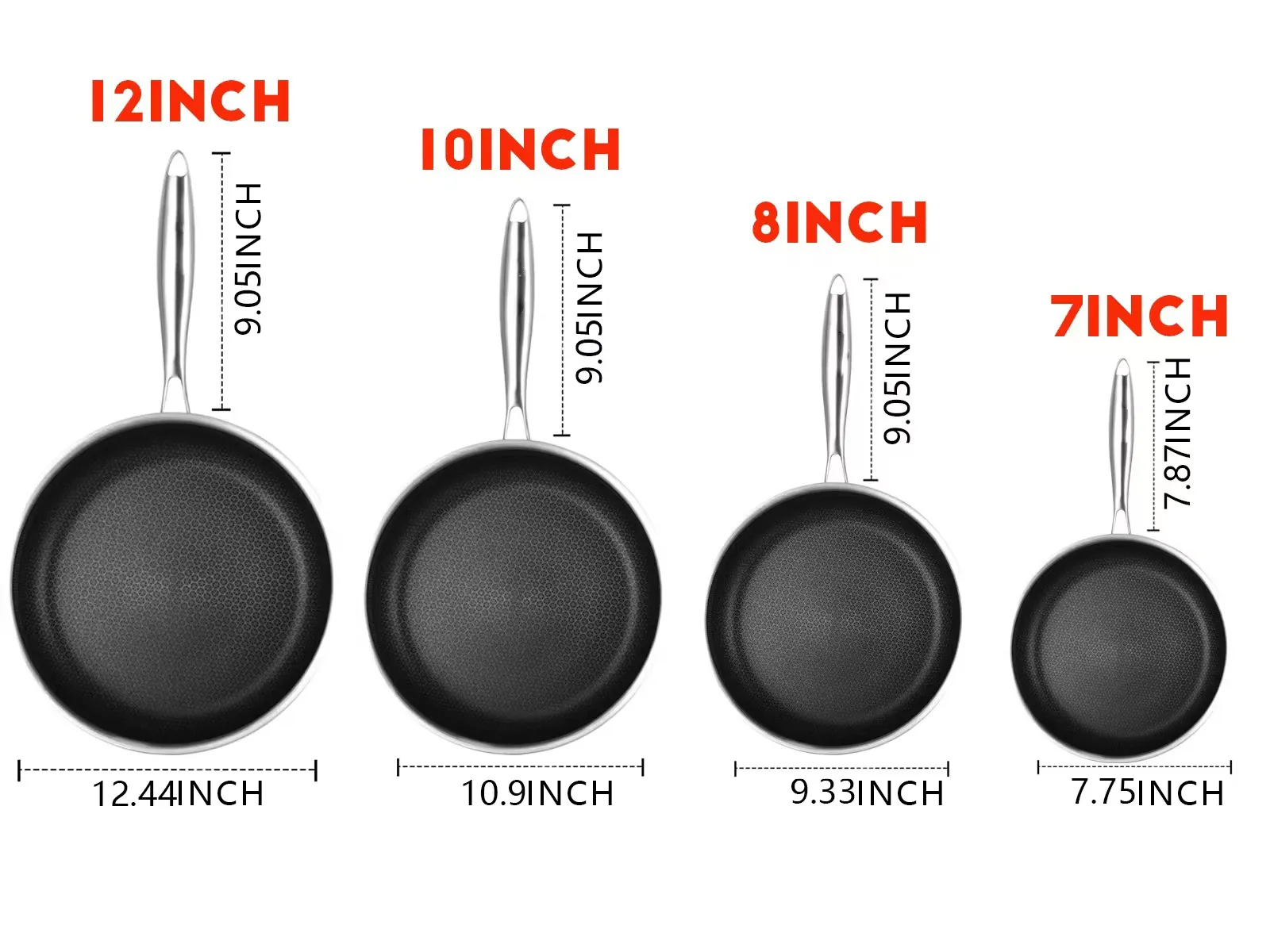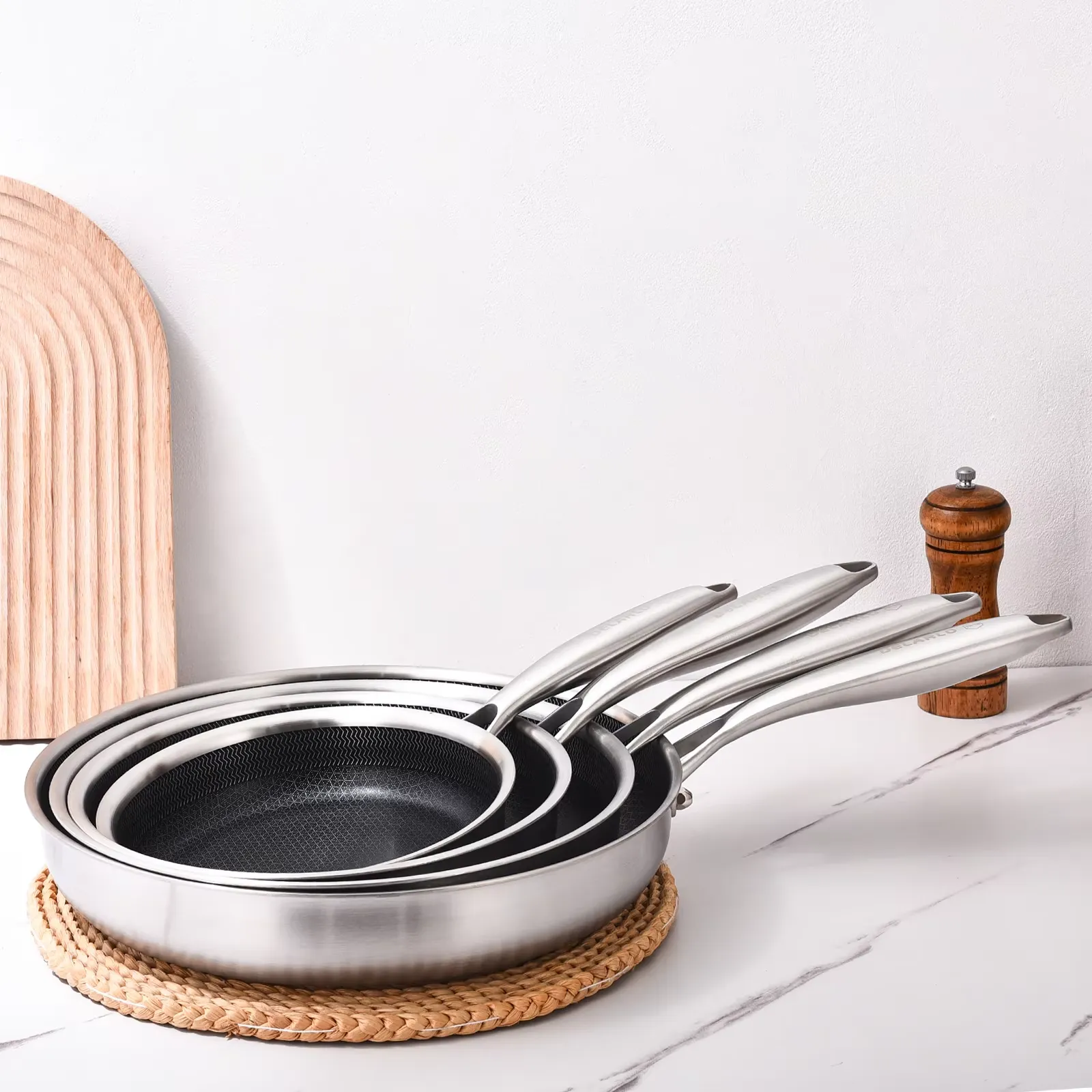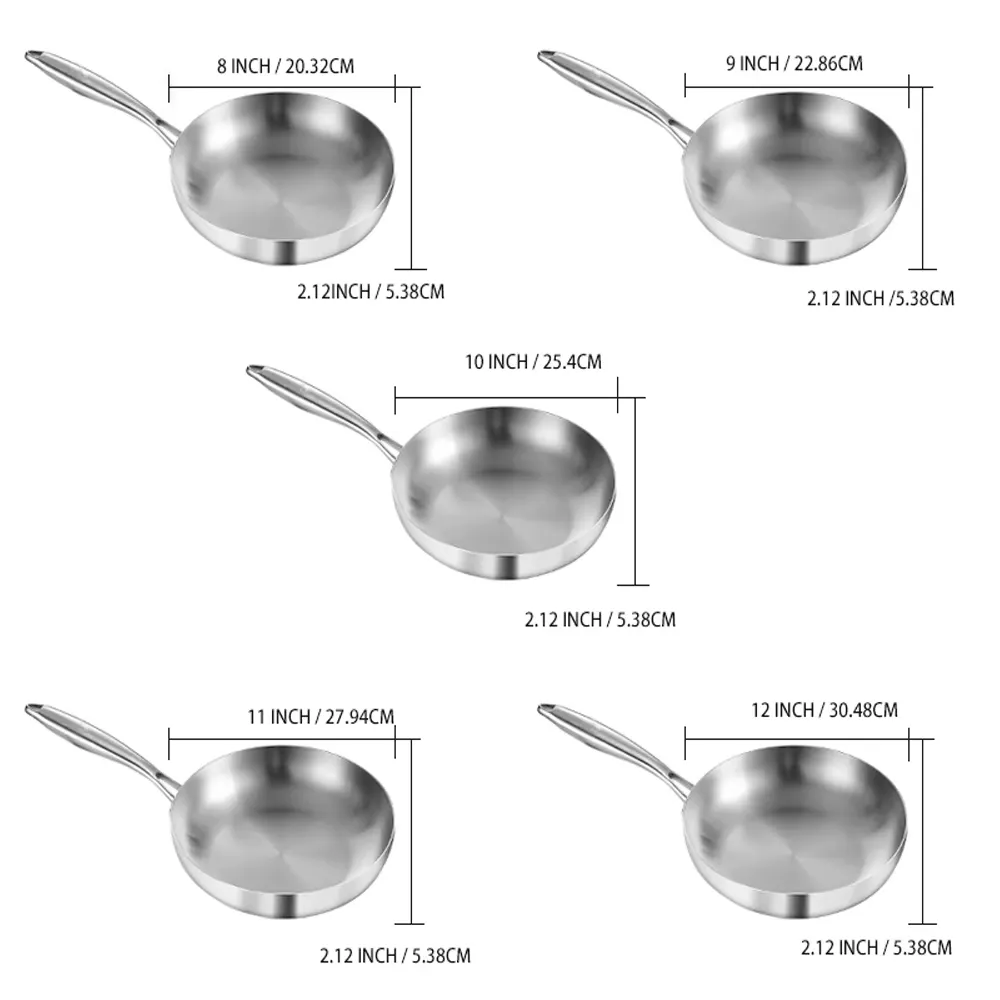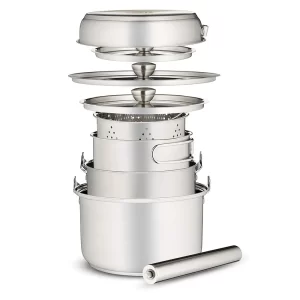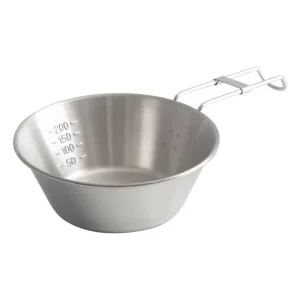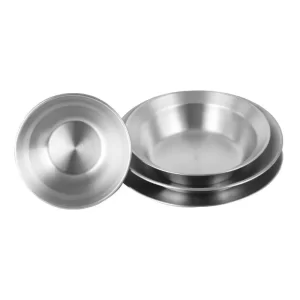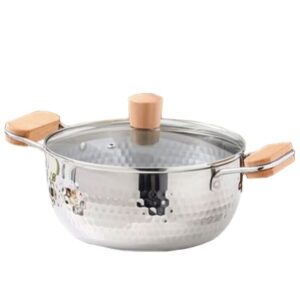When purchasing ustensiles de cuisine, it isn’t sufficient to make out which product one desires but also to understand the right frying pan sizes needed for daily cooking, especially for such an everyday tool like a frying pan.
Because there are so many different sizes of frying pans to choose from, choosing the best size when buying a skillet can be daunting, and the differences between these sizes are less pronounced compared to cookware in volume-based sets like crackpots.
Table des matières
ToggleDefinition of Frying Pan Sizes
First of all a frying pan is sized from the top of the pan’s wall to the top of the wall, i.e. the maximum diameter, not by the diameter of its cooking surface (bottom edge to bottom edge). In everyday use, while it’s true that 10-inch and 12-inch frying pans can handle many of the same tasks, there are still advantages to smaller and larger sizes – a big reason we recommend having at least one small, medium, and large frying pan at your disposal.
Due to design differences in wall rise, there are usually two 12-inch pans that have different cooking surface sizes. For example, our 12-inch stainless steel skillet has a cooking surface of approximately 9.5 inches, while our other stainless steel frying pan has a cooking surface area of approximately 9 inches.
5 Characteristics of Various Sizes of Frying Pan Sizes
6-Inch Frying Pan
Benefit: The compact cooking surface area of this skillet means that your ingredients will get plenty of attention from the evenly distributed heat on the bottom and sides of the skillet.
Scenarios: Single-serving dishes such as Dutch babies (muffins), omelets, or pancakes; a fried egg or chicken breast; roasted spices or nuts; garlic sauce, garlic butter, brown butte, or other sauces for side dishes; sautéing a small number of vegetables such as mushrooms.
Reference size: total diameter: 6.8 inches, cooking surface diameter: 4.7 inches, length: 13.8 inches, depth: 1.25 inches, weight: 1.25 pounds
8-inch Frying Pan
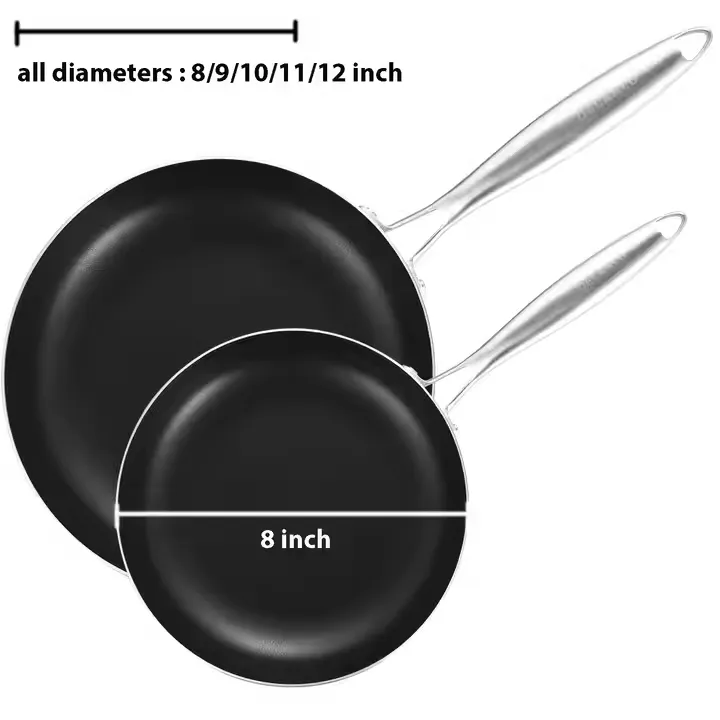
Benefits: Smaller pan means more even heat distribution and the ability to reach high temperatures due to incidental heat exposure from the tilted sides of the pan.
Scenarios: single servings such as a fried egg, steak, or chicken breast, making thick and fluffy omelets (eggs are forced upwards due to the smaller cooking surface), sautéing vegetables as a side dish.
Reference size: Total diameter: 8.5 inches, Cooking surface diameter: 5 inches, Height: 2.75 inches, Length: 15.2 inches, Depth: 1.75 inches, Weight: 1.75 lbs.
10-inch Frying Pan
Benefit: A medium-sized pan means a middle ground where more things can fit in the pan without overcrowding. With the minimal sacrifice of heat retention.
Scenarios: 2 to 3 servings (i.e., fry 3 eggs or 2 chicken breasts) frying lattes, reheating leftovers, sautéing lots of vegetables.
Dimensions: Total Diameter: 10.5 inches, Cooking Surface Diameter: 7.5 inches, Height: 3.5 inches, Length: 18.5 inches, Depth: 1.75 inches, Weight: 2.25 lbs.
12-inch Frying Pan
Benefit: A large skillet means that you can cook a large amount of food in the pan at once without overcrowding the pan. It also means greater heat retention, as there are more materials to keep the heat in.
Scenarios: frying 4 eggs or 3 chicken breasts, frying bacon strips without having to trim the ends, making flatbread pizzas, galettes, or Dutch babies (12 inches is the ideal size for an oven-safe skillet).
Reference size: total diameter: 12.5 inches, cooking surface diameter: 9.5 inches, height: 3.5 inches, length: 20.5 inches, depth: 1.75 inches, weight: 3 pounds
How to Choose the Right Frying Pan Size?
Preventing overcrowding should be a top priority, as overcrowded ingredients heat unevenly and cook inconsistently, which in turn lengthens cooking time and compromises optimal flavor.
- Kitchenette or single-person cooking: If you have a small kitchen, can only cook for one or two people at a time, or just cook infrequently, you can probably get away with a small- to medium-sized pot (8-inch or 10-inch).
- Kitchen or multi-person cooking: if you collect cookware, cook at more times, and have multiple mouths to feed each night, then a larger size pan (12-inch or 14-inch) is ideal and efficient.
In conclusion, the choice of frying pan should be based on your daily cooking habits and the size of your family. Each size skillet has its unique advantages, and understanding the uses of different sizes can help you make the best choice.

